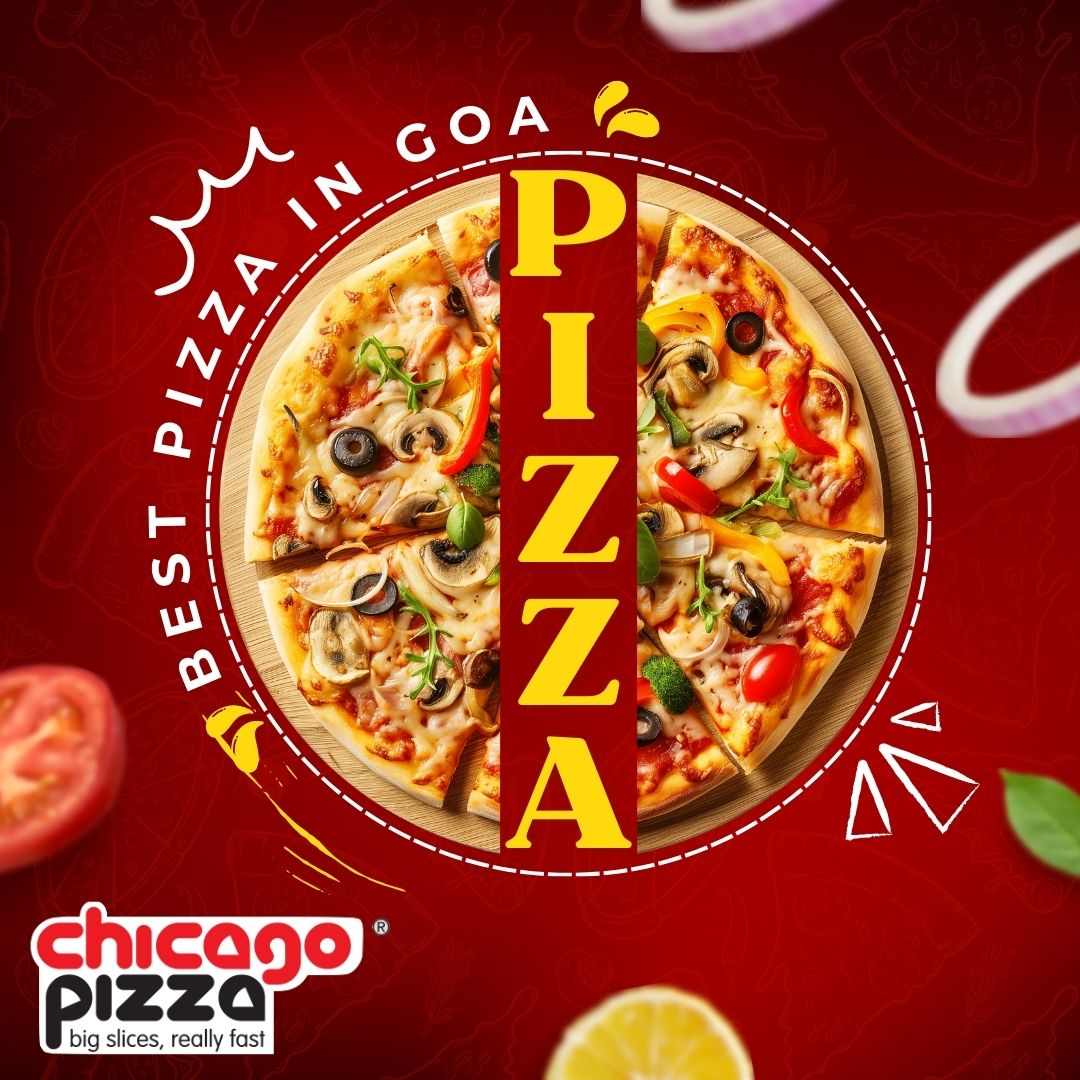1. Neapolitan Pizza
The original pizza is Neapolitan. The origins of this tasty pie may be traced back to the 18th century in Naples, Italy. During this period, the poorest residents of this beach community commonly purchased low-cost, quick-to-eat meals. Fortunately for them, Neapolitan pizza was both inexpensive and easily accessible from a variety of street sellers.
Neapolitan Pizza Variations
Today, there are three approved Neapolitan pizza varieties:
- Tomatoes, garlic, oregano, and extra virgin olive oil are used in this pizza marinara.
- Pizza Margherita: Tomatoes, sliced mozzarella, basil, and extra virgin olive oil are
included on this pizza.
- Extra virgin olive oil, tomatoes, mozzarella from Campania, basil, and pizza
Margherita.
Traditional Neapolitan Pizza Toppings: Fresh mozzarella, tomatoes, basil leaves, oregano, and olive oil are classic Neapolitan pizza toppings. Because Neapolitan pizza is thin, it isn’t built to support a lot of toppings. In fact, Neapolitan pizza is often eaten with a fork and knife because it is so thin.
Suggestions for Neapolitan Pizza Baking:
Many people will tell you that the only way to produce “genuine” Neapolitan pizza is to bake it in a wood-fired oven heated to between 800 and 1,000 degrees Fahrenheit, as it was done many years ago. The pie only takes around 70-90 seconds to thoroughly cook at this high temperature.
2. Chicago Pizza
Chicago pizza, also known as deep-dish pizza, is named after the city where it was originated. In the early 1900s, Italian immigrants in Chicago were looking for a pizza that tasted like the Neapolitan pizza they were used to. Ike Sewell had something different in mind than duplicating the notoriously thin pie. He made a pizza with a thick crust with raised sides, similar to a pie, with components laid out in reverse, with mozzarella slices on the bottom,
meat, veggies, and crushed tomatoes on top. Sewell went on to develop the now-famous franchise restaurant Pizzeria Uno as a result of his initial concept.
- The traditional toppings for Chicago pizza include ground beef, sausage, pepperoni, onion, mushrooms, and green peppers, all of which are put beneath the tomato sauce. Some restaurants top their pizzas with a sprinkling of Parmesan cheese on top of the tomato sauce.
- Baking Suggestions for Chicago Pizza: Wipe the pan down with oil to make it easier to remove a Chicago pizza from the pan. The addition of oil to the pan also aids in the crisping of the dough’s base. Because there are more toppings and dough on a deep dish pizza, it takes longer to bake, taking 30 to 35 minutes.
3. New York-Style Pizza
New York-style pizza is one of America’s most famous regional pizza variants, with its typical big, foldable pieces and crispy outer crust. Originally a Neapolitan-style pizza variant, the New York slice has gained a following of its own, with some claiming that its distinct flavour is due to the minerals contained in New York’s tap water supply.
- Traditional Toppings on New York-Style Pizza: Tomato sauce and mozzarella cheese are common toppings on New York-style pizza. Unlike their thin-crust counterparts, New York-style pizzas may accommodate a variety of extra toppings, ranging from pepperoni and sausage to mushrooms and anchovies. While this variety of pizza can have nearly any topping, it’s typical to see pizza aficionados sprinkling oregano, red pepper flakes, Parmesan cheese, and garlic powder on their slices.
- Baking Suggestions for New York-Style Pizza: Many people will tell you that, like Neapolitan pizza, a New York-style pizza must be baked in a wood or coal-fired oven to be authentic. Many people now bake them in gas deck ovens, which produce the same wonderful and crispy results.
4. Sicilian Pizza
Sfincione, or Sicilian pizza, is a thick slice of pizza with pillowy dough, a crispy crust, and a hearty tomato sauce. This square-cut pizza is available with or without cheese, and the cheese is frequently placed beneath the sauce to keep the pie from becoming soggy. Sicilian pizza was brought to America by Sicilian immigrants in the 19th century, and it became famous in the United States after WWII.
- Traditional Sicilian Pizza Toppings: Sicilian pizzas are frequently topped with tomato, onion, anchovies, and herbs.
- Baking Suggestions for Sicilian Pizza: Try coating your pan with an olive oil blend to bring out the taste of your Sicilian pizza dough. The length of time your pie should be baked depends on the temperature of your oven. For example, if your oven is set to 425 degrees Fahrenheit, your Sicilian pizza should take 15 to 20 minutes to bake.
5. Greek Pizza
Greek pizza was invented by Greek immigrants who immigrated to America and were exposed to Italian pizza. Greek-style pizza, which is notably popular in New England, has a thick and chewy crust baked in shallow, oiled pans, resulting in a practically deep-fried bottom. While the crust of this type is puffier and chewier than that of thin crust pizzas, it is not as thick as a deep-dish or Sicilian crust.
- Traditional Greek Pizza Toppings: Greek pizza is often heavier on the sauce than the cheese. The sauce is often sour with a strong oregano taste and a tart tomato paste. It is frequently topped just with cheese, which is typically a combination of mozzarella and cheddar or provolone. It may include feta cheese, black olives, and red onion, among other non-Greek or Greek toppings.
- Baking Suggestions for Greek Pizza: To get a puffy, chewy crust, Greek pizza is normally cooked on a shallow, circular pan that has been liberally coated with olive oil. By lining the pan with oil, the bottom of the dough may cook as it bakes.
6. California Pizza
California pizza, sometimes known as gourmet pizza, is distinguished by its exotic ingredients. Chef Ed LaDou began experimenting with pizza recipes in the legendary Italian restaurant Prego in the late 1970s, and this pizza was born. He made a pizza with mustard, ricotta, pate, and red pepper and gave it to Wolfgang Puck by coincidence. Puck requested LaDou to be the lead pizza cook at his restaurant after being impressed by his inventive pie. It was here that LaDou developed over 250 distinct pizza recipes, which became the menu for the franchise restaurant California Pizza Kitchen.
- Traditional Toppings for California Pizza: There are no traditional toppings for California pizza. Because of the absence of detail, you are free to be creative. Anything from chicken and artichokes to goat cheese and egg can be included.
- California Pizza Baking Suggestions: The thickness of your crust, whether thin or thick, will dictate how you make your pizza.
7. Detroit Pizza
In the 1940s, Detroit-style pizza was baked in a square automobile parts pan, reflecting the city’s historic links to the car sector. The Detroit pizza is first covered with pepperoni, then with brick cheese that is stretched to the pan’s very edges, resulting in a charred cheese border. The sauce is then spooned over the pie in a manner reminiscent to Chicago-style pizza. This pizza has a thick, exceptionally crispy crust on the outside and a soft, airy inside.
- Traditional Detroit Pizza Toppings: Traditional Detroit pizza toppings include pepperoni, brick cheese (often Wisconsin brick cheese), and tomato sauce. Mushrooms and olives are other popular garnishes.
- Suggestions for Detroit Pizza Baking: Use a specific Detroit pan or a conventional jelly roll baking pan. Press the air out of the dough as you press it to the pan’s edges; extend the dough up the sides about half an inch. Make careful to generously distribute the cheese throughout the dough and all the way to the edges for a
caramelised edge. Cook for 10-15 minutes at the maximum temperature setting (500 to 550 degrees Fahrenheit). Make squares out of your slices.
8. St. Louis Pizza
Are you looking for a light slice? St. Louis pizza has a thin crust with a cracker-like texture that is produced without the use of yeast. St. Louis pizza is typically sliced into three- or four- inch rectangles, known as “party” or “tavern” cut, due to the crispy crust. This pizza has Provel processed cheese, a gooey blend of cheddar, Swiss, and provolone cheeses. In the nineteenth century, St. Louis had an influx of Italian immigrants searching for work. The St. Louis-style pizza was invented by the Italian community, mostly from Milan and Sicily. Its sweet sauce reflects the Sicilian influence.
- Traditional Toppings on St. Louis Pizza: St. Louis pizza contains Provel cheese and a sweeter tomato sauce with a generous dose of oregano. Because of its hard crust, St. Louis-style pizza can accommodate a variety of toppings.
- Suggestions for St. Louis Pizza Baking: Place a pizza stone or a thin baking sheet on the bottom rack of the oven.



